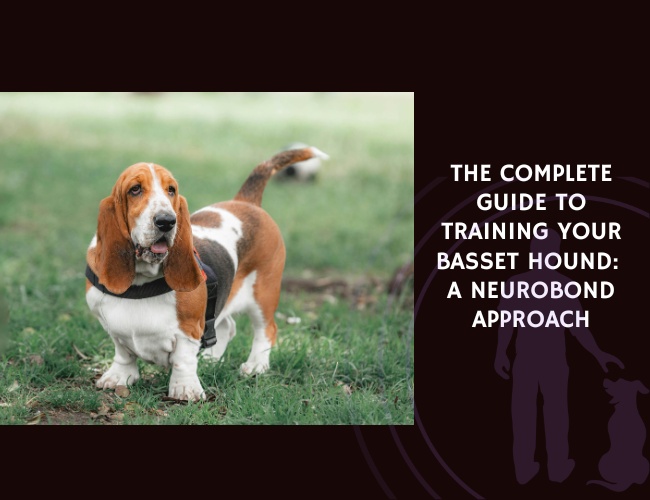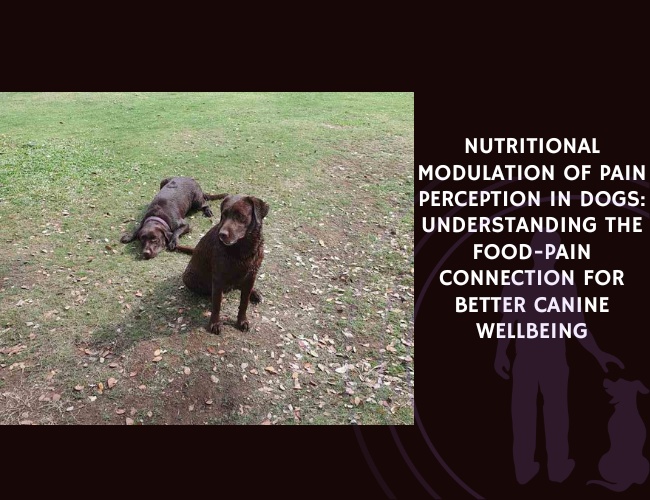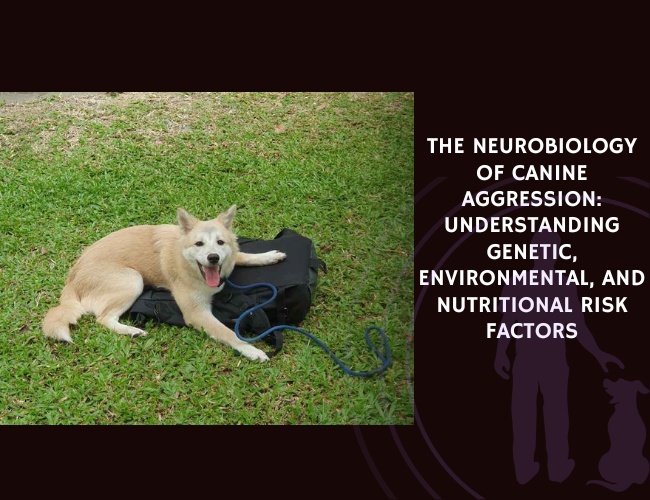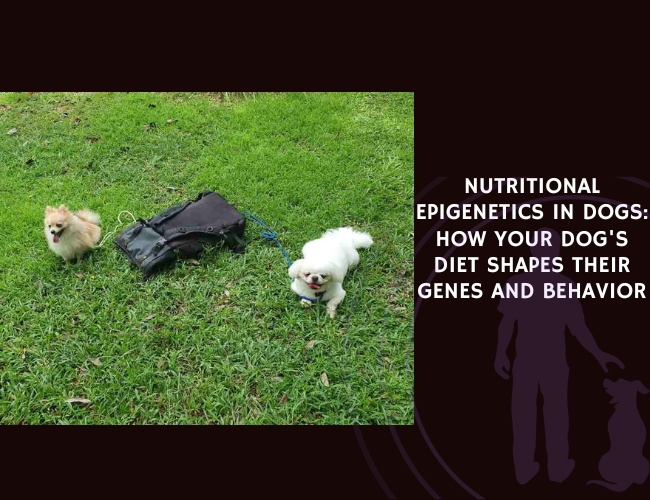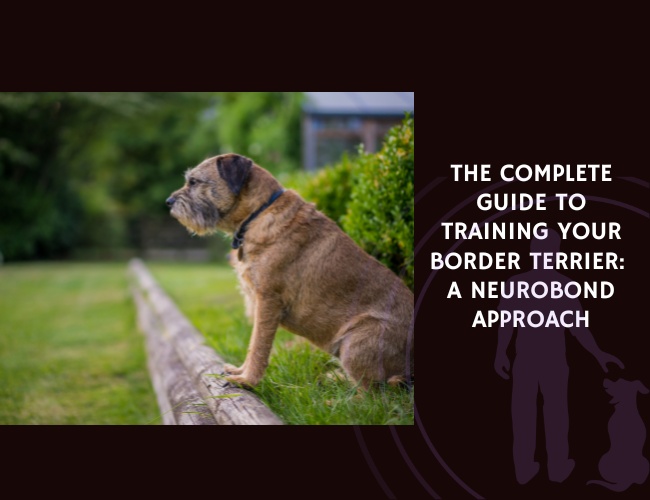Introduction
Have you ever noticed how your furry friend seems most relaxed when following their daily routine? That contented sigh as they settle into their favorite spot after their morning walk, or the excited tail wag that appears precisely at dinner time? These behaviors tell us something profound about the canine mind – your dog thrives on predictability and the sense of control it brings to their world.
Understanding how environmental structure, consistent routines, and the opportunity to make choices affect your dog’s behavior isn’t just academic curiosity. It’s the key to unlocking a happier, more confident companion who trusts you deeply and navigates life with less anxiety. Let us guide you through the fascinating science of how predictability and control shape everything from your dog’s stress levels to their ability to learn new behaviors.
Whether you’re welcoming a new puppy into your home, helping a rescue dog adjust, or simply wanting to deepen your bond with your longtime companion, the insights we’ll explore together will transform how you think about your dog’s daily experiences. 🐾
Understanding Canine Psychology: The Foundation of Predictability
Why Your Dog’s Brain Craves Structure
Your dog’s brain, much like ours, is wired to seek patterns and predictability in the environment. This isn’t just a preference – it’s a survival mechanism that has evolved over thousands of years. When your dog can predict what comes next, their amygdala (the brain’s alarm system) remains calm, allowing them to feel secure and focus on positive experiences like play, exploration, and bonding with you.
Think about it this way: when your dog knows that the sound of your keys means a walk is coming, or that their food bowl appearing signals mealtime, they’re not just responding to cues. They’re experiencing a sense of agency and understanding in their world. This predictability creates what behavioral scientists call “environmental structure” – a framework that helps your dog make sense of their daily life.
Research with Beagle puppies has shown that dogs with consistent behavioral patterns develop more stable temperaments. These dogs exhibit reliable “Pack Drive” (their desire to be part of the family unit) and balanced “Fight or Flight” responses, suggesting that predictability literally shapes how your dog’s personality develops.
The Stress of Unpredictability
Now imagine experiencing life through your dog’s eyes when routines constantly change. Unexpected loud noises, irregular feeding times, or unpredictable human behaviors can trigger what researchers call “amygdala hypersensitivity.” You might notice this as increased barking, destructive behaviors, or that anxious pacing that breaks your heart to witness.
When dogs can’t predict or control their environment, their stress hormone (cortisol) levels rise significantly. This isn’t just momentary discomfort – chronic unpredictability can lead to long-term behavioral issues. Your normally confident dog might become reactive, withdrawn, or develop what looks like “stubborn” behavior but is actually a coping mechanism for uncertainty.
The good news? You have the power to create a predictable, structured environment that helps your dog flourish. Next, we’ll explore how the concept of control plays into this equation.
The Science of Control: Learned Helplessness vs. Empowerment
Understanding Learned Helplessness in Dogs
Have you ever wondered why some dogs seem to “give up” during training or appear unmotivated despite rewards? This phenomenon, known as learned helplessness, occurs when dogs repeatedly experience situations where their actions don’t influence outcomes. It’s heartbreaking to witness, but understanding it is the first step to preventing or reversing it.
When a dog experiences repeated uncontrollable situations – perhaps inconsistent training methods, unpredictable punishment, or chaotic environments – their brain essentially learns that trying is futile. This isn’t stubbornness or lack of intelligence; it’s a neurological response to perceived powerlessness. The medial prefrontal cortex, responsible for decision-making and learning, actually changes its signaling patterns, making it harder for your dog to learn new behaviors even when positive opportunities arise.
Picture a shelter dog who’s been moved between multiple homes. Each environment had different rules, different responses to the same behaviors, and no consistent pattern they could learn from. Eventually, this dog might stop trying to engage, not because they don’t want connection, but because their brain has adapted to protect them from the disappointment of unpredictable outcomes.
The Power of Choice-Based Learning
But here’s where the magic happens – when you give your dog choices and let them experience the consistent consequences of those choices, you’re literally rewiring their brain for confidence and engagement. This is what we call choice-based learning, and it’s transformative for your dog’s well-being.
Simple choices can make a profound difference. Letting your dog choose between two toys, decide which direction to explore on a walk (within safe boundaries), or select their resting spot gives them a sense of control. When they learn that sitting calmly opens doors, or that bringing you a toy initiates play, they’re building what scientists call “stimulus-response associations” – reliable patterns that make their world predictable and manageable.
Research shows that dogs with opportunities for choice exhibit more focused exploration, reduced stereotypical behaviors (like excessive licking or tail chasing), and stronger bonds with their humans. You’re not just training behaviors; you’re building your dog’s confidence in their ability to influence their world positively.
Practical Applications for Everyday Life
So how do you implement choice-based learning in your daily routine? Start small and be consistent. Here are some ways to empower your furry friend:
Morning Routines: Instead of deciding everything for your dog, offer choices. Hold up two leashes and let them nose-touch the one they prefer. This tiny choice sets a positive tone for the day.
Training Sessions: Use positive reinforcement consistently. When your dog sits, they choose to earn a reward. When they come when called, they choose connection with you. Make the consequences of good choices immediately clear and rewarding.
Environmental Enrichment: Provide puzzle feeders where your dog controls the pace of getting their food. Hide treats around the house so they can choose when and how to “hunt.” These activities combat learned helplessness by proving their actions have meaningful results.
Remember, you’re not being permissive – you’re being strategic. By offering controlled choices within safe boundaries, you’re building a confident, engaged companion who trusts both you and their own abilities. 🧡
Feeding Schedules and Behavioral Stability
The Hormone-Behavior Connection
Did you know that when and how you feed your dog directly impacts their behavior through a complex dance of hormones? It’s fascinating how something as simple as meal timing can influence everything from your dog’s activity levels to their ability to stay calm during your absence.
When your dog eats at consistent times each day, their body develops a reliable rhythm of hormone release. Leptin (the satiety hormone) and ghrelin (the hunger hormone) begin operating on a predictable schedule, which helps regulate not just appetite but also mood and energy levels. This hormonal predictability creates a cascade of positive effects throughout your dog’s body and brain.
Conversely, irregular feeding or chronic food restriction can trigger significant stress responses. Research has shown that unpredictable feeding schedules can lead to increased cortisol (stress hormone) production, decreased serotonin (the “feel-good” neurotransmitter), and even hyperactivity. You might notice your dog becoming more anxious, exhibiting destructive behaviors, or struggling to settle down – all potential signs that their feeding routine needs more structure.
Creating Optimal Feeding Routines
The ideal feeding schedule depends on your dog’s age, size, and activity level, but consistency is key regardless of these factors. Most adult dogs thrive on two meals per day, spaced roughly 12 hours apart. This schedule mimics their natural feeding patterns while preventing the blood sugar spikes and crashes that can affect behavior.
Here’s what an optimal routine might look like:
- Morning meal: Shortly after your dog’s morning bathroom break, creating a predictable wake-up routine
- Evening meal: At a consistent time that allows for digestion before bedtime
- Treat timing: Predictable moments for training rewards or enrichment activities
The beauty of consistent meal timing extends beyond just hunger management. Your dog’s digestive system, from enzyme production to gut motility, synchronizes with these patterns. This digestive predictability supports better nutrient absorption, more stable energy levels, and even improved immune function.
Special Considerations for Different Life Stages
Puppies need more frequent meals – typically three to four times daily – as their smaller stomachs and higher energy needs require regular refueling. This frequent, predictable feeding also provides more opportunities for potty training success, as elimination becomes more predictable too.
Senior dogs might benefit from smaller, more frequent meals if they’re experiencing digestive changes. However, maintaining predictability remains crucial. If you need to adjust your senior dog’s feeding schedule, do so gradually over several days to minimize stress.
Dogs with anxiety particularly benefit from structured feeding times. The predictability helps anchor their day, providing reliable points of calm and satisfaction. Some anxious dogs even benefit from puzzle feeders or slow-feed bowls, as the focused activity of working for food can be naturally calming.
Remember, sudden changes in appetite or eating behavior warrant a conversation with your veterinarian, as they can signal health issues that need attention.

Environmental Enrichment: Active vs. Passive Stimulation
Understanding Different Types of Enrichment
Not all enrichment is created equal when it comes to your dog’s behavioral development and well-being. The distinction between controllable (active) and passive stimuli in your dog’s environment can make the difference between a confident, engaged companion and one who simply tolerates their surroundings.
Active enrichment puts your dog in the driver’s seat. These are the puzzle toys they manipulate to release treats, the snuffle mats they explore at their own pace, or the interactive games where their actions directly influence outcomes. Research from zoological settings has shown that animals given control over their enrichment activities exhibit more positive behaviors, increased focused exploration, and significant reductions in stereotypical behaviors like excessive licking or pacing.
Passive enrichment, while still valuable, doesn’t offer the same level of engagement. This might include background music, scented items placed in their environment, or visual stimuli they observe but can’t influence. Think of it as the difference between watching TV and playing an interactive video game – both can be enjoyable, but only one truly engages your problem-solving skills and gives you agency.
Designing Effective Enrichment Programs
Creating an enrichment program that truly benefits your dog means thoughtfully combining both active and passive elements, with a strong emphasis on controllable experiences. Here’s how to build an enrichment strategy that promotes confidence and reduces anxiety:
Cognitive Challenges: Rotate different puzzle feeders throughout the week. Start with easier ones to build confidence, then gradually increase difficulty. The key is that your dog controls the pace and method of solving these puzzles.
Sensory Exploration: Create “sniff gardens” with different safe herbs and textures. Hide treats in cardboard boxes filled with paper, allowing your dog to choose how to explore and discover rewards. This combines mental stimulation with physical activity, all under your dog’s control.
Social Enrichment: Structured playdates where your dog can choose to engage or observe provide social stimulation while maintaining their sense of agency. Never force interactions; instead, create opportunities for choice.
Environmental Complexity: Rearrange furniture occasionally to create new exploration opportunities, but maintain key anchor points (like their bed or favorite resting spot) for security. This balance between novelty and familiarity is crucial.
The Technology Factor: Modern Solutions
Innovative enrichment solutions are emerging that recognize the importance of controllable stimuli. AI-driven systems now exist that can provide personalized enrichment based on your dog’s specific behaviors and preferences. These might include devices that dispense treats when your dog performs certain behaviors, play recordings of your voice at specific times, or even adjust environmental factors like calming scents based on detected stress levels.
However, technology should supplement, not replace, your direct interaction and the hands-on enrichment you provide. The most powerful enrichment remains the activities you do together – training sessions, interactive play, and exploration walks where your dog helps choose the route.
Training Implications: Building Confidence Through Predictability
The Neuroscience of Consistent Training
When you maintain consistent training methods, something remarkable happens in your dog’s brain. Neurons in areas responsible for learning and decision-making become increasingly selective for specific stimulus-response associations. In simpler terms, your dog’s brain literally rewires itself to recognize and respond to patterns, making learning faster and more permanent.
This neurological adaptation explains why consistency in training is so crucial. Every time you reward the same behavior in the same way, you’re strengthening neural pathways. When commands, rewards, and consequences remain predictable, your dog develops what researchers call “value-based decision-making” – they learn not just what to do, but why it’s worth doing.
Consider the difference between two training approaches. In one, “sit” sometimes earns a treat, sometimes praise, sometimes nothing, and the criteria for what counts as “sitting” varies. In another, “sit” consistently means the same position, consistently earns a specific type of reward, and consistently occurs in a structured training context. Dogs in the second scenario learn faster, retain behaviors longer, and show less stress during training sessions.
Positive Reinforcement and Predictable Outcomes
The power of positive reinforcement extends beyond simple reward-giving. When your dog can predict that desirable behaviors lead to positive outcomes, they develop what’s called “appetitive motivation” – they actively seek opportunities to earn rewards rather than simply avoiding punishment.
This creates a positive feedback loop:
- Your dog performs a behavior (sits when asked)
- They receive a predictable, positive outcome (treat and praise)
- Their brain releases dopamine, reinforcing the neural pathway
- They become more likely to offer the behavior again
- Their confidence in their ability to influence outcomes grows
This predictable reward structure does more than teach individual behaviors. It builds your dog’s overall confidence in learning itself. Dogs trained with consistent positive reinforcement show increased willingness to try new behaviors, faster acquisition of complex tasks, and stronger resilience when facing challenges.
Avoiding Mixed Signals
Mixed signals in training can inadvertently create learned helplessness. When your dog can’t predict whether jumping up will result in attention, being pushed away, or being ignored, they may develop anxiety around greetings. This unpredictability doesn’t teach them what you want; it teaches them that their behavior doesn’t reliably influence outcomes.
To avoid mixed signals:
- Ensure all family members use the same commands and reward systems
- Maintain consistent criteria for what earns rewards
- Address unwanted behaviors the same way each time
- Keep training sessions structured and predictable in length and format
Remember, your dog is always learning, whether you’re actively training or not. Every interaction teaches them something about predictability and control in their relationship with you.
Rhythm. Choice. Confidence.
Structure isn’t restriction—it’s safety.
Your dog doesn’t crave chaos; they thrive in patterns. Consistent routines calm their nervous system, reduce cortisol, and open space for curiosity and trust. Predictability isn’t boring—it’s liberating.
Choice transforms obedience into confidence.
When your dog learns that their actions influence outcomes, they stop reacting and start engaging. Tiny choices—left or right, toy A or B—rebuild the bridge between behavior and consequence. That’s not spoiling—it’s strategy.


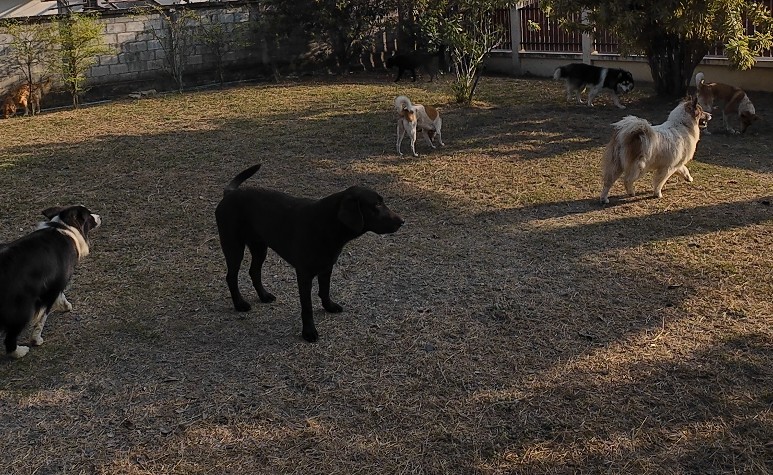
A well-fed clock creates a well-balanced dog.
Meal timing isn’t just about hunger. It’s about hormones, mood, and biological trust. Feeding on schedule builds internal security, reduces frustration, and stabilizes everything from sleep to behavior. Routine meals, calm mind.
Health and Welfare: The Physiological Impact
Stress Hormones and Behavioral Health
The relationship between predictability and your dog’s physical health runs deeper than you might imagine. When your dog experiences unpredictable environments or lacks control, their body launches a stress response that, while adaptive in short bursts, becomes harmful when chronic.
Elevated cortisol levels from ongoing unpredictability don’t just affect mood – they suppress immune function, impair digestion, and can even affect cognitive function. You might notice your stressed dog developing skin issues, digestive problems, or seeming “slower” to learn new things. These aren’t separate issues; they’re all connected to the physiological impact of living with uncertainty.
Conversely, dogs in predictable environments with opportunities for control show lower baseline cortisol levels, more robust immune responses, and better overall health outcomes. They’re literally healthier because their bodies aren’t constantly preparing for unpredictable threats.
Behavioral Indicators of Well-being
Understanding the behavioral signs of good welfare versus stress helps you gauge whether your predictability and control strategies are working. Dogs thriving in structured environments typically display:
Positive Indicators:
- Soft, relaxed body posture during rest
- Enthusiastic but controlled greetings
- Good appetite with calm behavior around meals
- Quality sleep with minimal nighttime restlessness
- Playful engagement with toys and humans
- Curious exploration of new items when introduced gradually
Stress Indicators to Watch For:
- Excessive vocalization, especially whining or demand barking
- Destructive behaviors when left alone
- Hypervigilance or inability to settle
- Changes in appetite or elimination patterns
- Excessive grooming or self-soothing behaviors
- Avoidance or shutdown behaviors during training
These behavioral indicators are your dog’s way of communicating their internal state. When you see stress indicators, it’s time to evaluate whether your dog needs more predictability, more opportunities for control, or both.
Long-term Health Benefits
The benefits of providing predictability and control extend well into your dog’s senior years. Dogs who’ve lived with structured routines and choice-based learning throughout their lives show:
- Better cognitive function in old age, with less severe cognitive dysfunction syndrome
- Maintained learning ability even as they age
- Stronger immune systems and fewer stress-related health issues
- Better adaptation to necessary changes (like mobility limitations)
- Stronger, more trusting relationships with their human families
This isn’t just about adding years to your dog’s life; it’s about adding life to their years. The investment you make in creating predictable, controllable experiences pays dividends in your dog’s long-term health and happiness. 🐾
Practical Applications for Dog Owners
Daily Routine Optimization
Let’s transform theory into practice with a structured daily routine that maximizes predictability while offering meaningful choices. Your dog’s ideal day should flow like a well-choreographed dance, with familiar rhythms punctuated by opportunities for agency.
Morning Foundation (6:00-9:00 AM): Start with a consistent wake-up time, even on weekends. Your dog’s circadian rhythm thrives on this predictability. Offer a choice immediately – perhaps between two different potty spots or walking routes. Follow with breakfast at the same time daily, using a puzzle feeder to provide controllable mental stimulation. This morning structure sets a calm, confident tone for the entire day.
Midday Maintenance (12:00-2:00 PM): If you’re home, this is perfect for a training session where your dog can earn rewards through their choices. Keep sessions short (5-10 minutes) but consistent. If you work outside the home, consider a dog walker who maintains your established routines, or use automated treat dispensers that respond to your dog’s specific behaviors.
Evening Enrichment (5:00-7:00 PM): This is typically your dog’s highest energy period. Provide active enrichment opportunities – hide and seek games, training challenges, or interactive play. Let your dog choose between different activities by showing clear interest. End with dinner at a consistent time, again using feeding methods that give your dog control over the pace.
Bedtime Ritual (9:00-10:00 PM): Create a calming sequence that signals day’s end. This might include a final potty break, a gentle grooming session if your dog enjoys it, and settling into their chosen sleeping spot. The predictability of this routine helps your dog’s body prepare for rest.
Creating Effective Enrichment Schedules
Structure your enrichment activities to provide variety within a predictable framework. Think of it as a curriculum for your dog’s mental and physical development.
Monday/Wednesday/Friday: Focus on cognitive challenges. Rotate through different puzzle toys, ensuring your dog maintains agency in solving them. Start with familiar puzzles and introduce new ones gradually, always allowing your dog to approach at their own pace.
Tuesday/Thursday: Emphasize sensory enrichment. Create scent trails in your yard, hide treats in different textures, or set up “sniff stations” with various safe materials. Your dog controls the exploration speed and method.
Weekends: Social enrichment opportunities, whether that’s structured playdates, visits to dog-friendly stores where your dog can choose to greet people, or simply longer walks where your dog has more route input.
Remember to observe your dog’s engagement levels. If they lose interest quickly, the enrichment might be too difficult or not rewarding enough. If they become frustrated, you may need to adjust the difficulty. The goal is sustained, happy engagement where your dog feels successful.
Troubleshooting Common Challenges
Even with the best intentions, you’ll face challenges in maintaining predictability and control. Here’s how to address common issues:
Challenge: Inconsistent family members Solution: Hold a family meeting to establish “house rules” for dog interactions. Create a visible chart with commands, rewards, and responses to common behaviors. Make it easy for everyone to be consistent.
Challenge: Unpredictable work schedule Solution: Focus on maintaining key anchor points (morning routine, evening feeding time) even if the middle of the day varies. Use technology like automatic feeders or hire consistent dog care to maintain routines when you can’t.
Challenge: Dog seems bored with routine Solution: Remember that predictability doesn’t mean monotony. Maintain structural predictability (when things happen) while varying the content (what happens). Rotate toys weekly, change walking routes within the same time slot, or vary training exercises while keeping sessions at consistent times.
Challenge: Reactive or anxious dog resists structure Solution: Start incredibly small. Maybe predictability begins with just one consistent element – perhaps morning feeding time. Once that’s established and your dog shows comfort, add another element. Building predictability for anxious dogs is like constructing scaffolding – each piece supports the next.
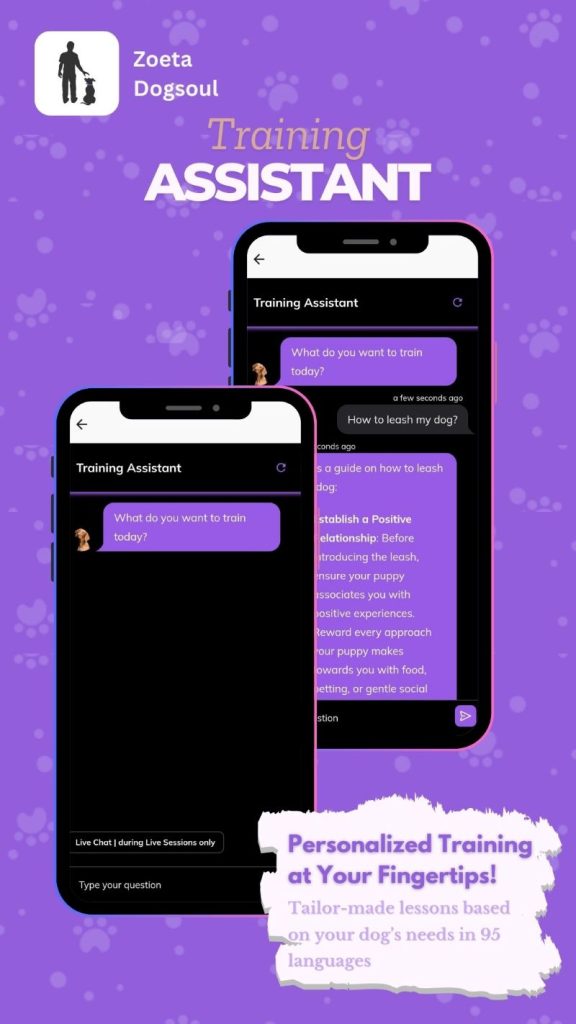
The Multi-Dog Household: Creating Harmony Through Structure
The Jenkins family struggled with three dogs who seemed constantly stressed. Meal times were chaotic, walks were a pulling contest, and the dogs competed anxiously for attention. The unpredictable environment was creating a feedback loop of stress behaviors.
They implemented a structured routine where each dog had predictable individual time with humans. Feeding moved to separate, consistent locations with each dog working for their food through different puzzle feeders suited to their skill level. Walks were scheduled so each dog knew when their turn was coming, reducing anxiety and competition.
Most importantly, they introduced choice protocols for all three dogs. Each learned they could “ask” for specific activities by bringing corresponding objects – a ball for play, a leash for walks, or a brush for grooming. This eliminated the frantic attention-seeking behaviors as each dog learned they had reliable ways to communicate their needs.
Within two months, the household transformed. The dogs were calmer, more affectionate with each other, and showed significantly reduced stress behaviors. Visitors commented on how peaceful the multi-dog home had become. 🧡
Senior Dogs and Special Considerations
Adapting Routines for Aging Companions
As your loyal companion enters their golden years, predictability becomes even more crucial while the need for adaptation grows. Senior dogs often experience cognitive changes similar to dementia in humans, making familiar routines their anchor in an increasingly confusing world. Yet, they also need modifications to accommodate physical limitations and changing needs.
The key is maintaining structural predictability while adjusting the content. Your senior dog’s breakfast might shift from a puzzle feeder to a raised bowl if arthritis makes floor eating uncomfortable, but it should still happen at the same time each day. Walks might become shorter or slower, but the routine of preparing for them – the same words, the same sequence of getting ready – remains unchanged.
Cognitive Dysfunction Syndrome (CDS) affects many senior dogs, causing confusion, anxiety, and disrupted sleep patterns. Dogs with strong lifetime foundations of predictability show slower progression of CDS symptoms. The neural pathways strengthened by years of consistent routines remain more resilient against age-related deterioration.
Maintaining Agency Despite Limitations
Your senior dog still needs choices, perhaps more than ever. As physical abilities decline, mental stimulation and the sense of control become increasingly important for quality of life. Adapt choice-making to their capabilities:
Mobility Adjustments: If stairs become difficult, offer choices between different ground-level resting spots. If long walks aren’t possible, let them choose between different sniffing activities in the yard.
Sensory Changes: Dogs losing hearing can still make choices through visual or scent cues. Dogs with declining vision benefit from predictable furniture placement but can choose between different textured beds or toys they can identify by smell.
Energy Management: Older dogs tire more quickly but still need engagement. Offer choices between shorter activities more frequently rather than eliminating decision-making opportunities entirely.
The goal is preventing learned helplessness that can accelerate decline. A senior dog who maintains agency and experiences predictable, positive outcomes stays mentally engaged and emotionally connected to their world.
Special Considerations for Medical Needs
Senior dogs often require medications, special diets, or regular medical procedures. These necessary interventions can disrupt predictability if not handled thoughtfully. Here’s how to maintain structure while addressing health needs:
Incorporate medical care into predictable routines rather than having it be an unpredictable disruption. Give medications at the same time daily, paired with a special treat that makes it a positive, predictable experience. If your dog needs regular vet visits, maintain the same preparation routine and, when possible, use the same veterinary staff.
For dogs developing anxiety around medical care, restore some control by teaching cooperative care behaviors. Train your dog to offer their paw for nail trims or to station on a mat for examinations. This transforms medical care from something that happens to them into something they participate in.
Building Resilience: Beyond Basic Predictability
The Confidence Cascade
When you successfully combine predictability with opportunities for control, something magical happens – your dog develops what behaviorists call “generalized confidence.” This isn’t just confidence in specific situations, but a fundamental belief in their ability to navigate the world successfully.
This confidence cascade begins with small successes. Your dog learns that sitting opens doors, that bringing toys initiates play, that calm behavior earns attention. Each successful prediction and choice builds upon the last, creating an upward spiral of confidence and capability. Dogs with this foundation don’t just cope with life – they actively engage with it.
You’ll see this confidence manifest in unexpected ways. Your dog might approach new situations with curiosity rather than fear, recover more quickly from startling events, or show creativity in problem-solving. They’ve learned that the world, while sometimes surprising, is fundamentally manageable and that their actions matter.
Preparing for Life’s Unpredictability
Life will always include unpredictable elements – thunderstorms, veterinary emergencies, family changes. The goal isn’t to eliminate all unpredictability but to build your dog’s resilience for handling it. Dogs with strong foundations of predictability and control show remarkable adaptability when changes do occur.
Think of predictability and control as your dog’s emotional bank account. Every positive, predictable experience is a deposit. When unexpected challenges arise, your dog can draw on these reserves without becoming overwhelmed. A dog with a rich account of positive, controllable experiences can weather a vet visit or a household move while maintaining their fundamental sense of security.
To build this resilience, occasionally introduce controlled novelty within your predictable framework. A new toy appearing during regular playtime, a different treat in the usual training session, or a small detour on your standard walk – these controlled surprises teach your dog that novelty can be positive and manageable.
The Lifelong Journey
Creating optimal predictability and control for your dog isn’t a destination – it’s an ongoing journey that evolves with your dog’s changing needs. Puppyhood requires frequent, simple predictability. Adolescence needs consistent boundaries with increasing choices. Adulthood thrives on established routines with regular enrichment. Senior years call for adapted predictability that accommodates limitations while maintaining agency.
Throughout this journey, you’re not just managing behaviors or preventing problems. You’re actively building your dog’s emotional resilience, cognitive capabilities, and fundamental trust in the world and in you. Every consistent routine, every opportunity for choice, every predictable positive outcome strengthens the incredible bond between you and your four-legged family member.
Conclusion: Is a Structured, Choice-Rich Environment Right for Your Dog?
As we reach the end of our exploration into predictability and control in your dog’s life, you might be wondering if all this structure and intention is really necessary. The answer, supported by extensive research and countless real-world transformations, is a resounding yes – but implemented in a way that suits your unique situation and your individual dog’s needs.
Every dog, regardless of breed, age, or background, benefits from predictable routines and opportunities for control. Whether you have a confident sporting dog who needs structured outlets for their drive, an anxious rescue who needs predictability to feel safe, or a senior companion who needs routine to navigate cognitive changes, these principles apply. The specific application might vary, but the fundamental need for predictability and agency remains universal.
The beauty of this approach is that it doesn’t require expensive equipment, professional training, or dramatic lifestyle changes. It simply asks you to be intentional about the experiences you provide your dog. That consistency in meal times, that choice between toys, that predictable bedtime routine – these seemingly small elements combine to create a life where your dog feels secure, confident, and deeply connected to you.
Remember, you’re not aiming for rigid perfection. You’re creating a framework that gives your dog the two things they need most: the security of knowing what to expect and the dignity of influencing their own experience. Within this framework, there’s room for spontaneity, adventure, and all the joy that makes life with dogs so rewarding.
As you implement these ideas, watch for the changes – the softer body language, the more enthusiastic engagement, the deeper trust in those eyes that follow you with such devotion. You’re not just improving behaviors; you’re enhancing your dog’s fundamental experience of being alive. And in doing so, you’re deepening one of life’s most rewarding relationships – the bond between human and dog.
Take it one day at a time, one routine at a time, one choice at a time. Your dog doesn’t need perfection; they need your commitment to their well-being and your understanding of their fundamental needs. With predictability as your foundation and controlled choices as your building blocks, you’re creating more than just good behavior – you’re crafting a life of confidence, joy, and mutual trust.
The journey toward optimal predictability and control is also a journey of discovery. You’ll learn to read your dog’s subtle signals, understand their preferences, and appreciate their unique personality in new ways. This isn’t just about what you do for your dog; it’s about what you become together – a team that navigates life with mutual understanding, respect, and deep affection.
Your furry friend is counting on you to be their guide, their safe harbor, and their partner in exploration. By providing the predictability they crave and the choices they need, you’re giving them the greatest gift possible – a life where they can truly thrive. 🐾🧡


